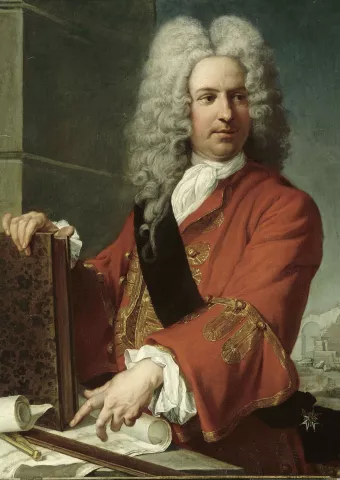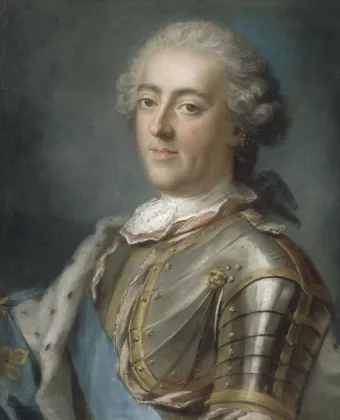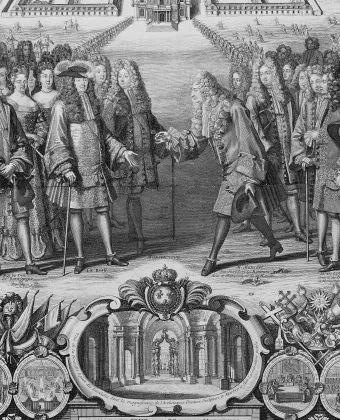A student and partner of Hardouin-Mansart and collaborator of Robert de Cotte, Jacques Gabriel built the famous Hunt Gallery in Foreign Countries (or the Gallery of Exotic Hunts) in 1735 in the Private Apartments of Louis XV, although it was later demolished, in 1766, to make room for the apartment of Maria Josepha of Saxony and then Madame du Barry (the paintings are now conserved in Amiens). With his son Ange Jacques, he designed the decoration for Louis XV’s bedchamber, the Clock Room, the King’s Private Chamber and, more generally, all the grand Rococo decoration created after 1735. In 1736 he built the Dauphin’s Grove, which was replaced in 1774 by the Apollo’s Baths Grove.
Made First Engineer of Bridges and Roads in 1716, Jacques Gabriel was responsible for the first major architectural works during the reign of Louis XV, including the Place Royale in Bordeaux and in Rennes, the Palace of La Muette in the Bois de Boulogne for Louis XV (destroyed), the large pavilion and wing for Louis XV at Fontainebleau, the new staircase and the Chapelle des Élus in the Palais des États in Dijon, and the cathedral in La Rochelle.
Ange-Jacques’s work was without doubt more illustrious than his father’s and represents, by itself, the era of Louis XV’s reign. At Versailles he built the Royal Opera House in 1763, inaugurated in 1770 for the wedding of the future Louis XVI to the Archduchess Marie Antoinette.
In 1771 he began the reconstruction, already postponed several times, of the Palace on the courtyard side, but the work remained unfinished upon the death of Louis XV in 1774.
Gabriel worked on Trianon for the first time in 1749 with his French Pavilion, designed to symbolize the new classical aesthetic. In 1761 he was commissioned by Louis XV to erect a bigger pavilion for Madame de Pompadour: the Petit Trianon. Finished in 1768, it later belonged to Marie Antoinette during the reign of Louis XVI. More than any other work, the Petit Trianon is a wonderful illustration of the Neo-Classical aesthetic of the century, a far cry from the Rococo style used by the architect in Versailles (New Dining Room; Council Chamber).
Ange Jacques Gabriel also distinguished himself in Paris, where he built Place de la Concorde (former Place Louis XV) and the École Militaire. Louis XV also commissioned him with new residences (Choisy, Bellevue, Saint-Hubert), the reconstruction of the palace of Compiègne and, most notably, his favourite room in Versailles: the library (1775). The architect’s death signified the end of a certain French art.














